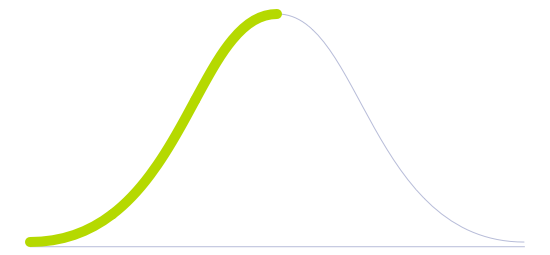Self-Driving Vehicle

Technology Life Cycle
Marked by a rapid increase in technology adoption and market expansion. Innovations are refined, production costs decrease, and the technology gains widespread acceptance and use.

Technology Readiness Level (TRL)
Prototype is fully demonstrated in operational environment.

Technology Diffusion
Adopts technologies once they are proven by Early Adopters. They prefer technologies that are well established and reliable.

Fleets of autonomous cars are aiming to disrupt the urban mobility industry by removing the human factor. These vehicles use a combination of sensors, software, and machine learning algorithms to sense their environment, make decisions, and control their movements, such as performing maneuvers, lane following, automated parking, reacting to unpredictable road and traffic conditions, and complex end-to-end navigation.
The technology behind self-driving vehicles is complex and includes a wide range of sensors, such as cameras, LiDAR (Light Detection and Ranging), radar, and GPS, that collect data about the vehicle's surroundings. This data is then processed by software that uses machine learning algorithms to interpret the data and make decisions about how the vehicle should respond.
By incorporating real-time information from the cloud and utilizing vehicle-to-vehicle communication, routes could be optimized, with the capacity of vehicles better served, traffic lights eliminated, and overall transportation would become much safer. Human drivers confront and usually have to manage an incredible variety of incidents within their contexts, including geographic areas, road types, and traffic and weather conditions. Furthermore, drivers routinely face ethical decisions in assessing conflicting situations, for instance, whether to prioritize driver safety above the safety of other vehicles. Fully automated vehicles must take these scenarios into account as well, but the principles might vary according to the implemented algorithms.
Despite the downsides, one of the biggest challenges for modern society is public transportation, which is desperately demanding to be overhauled to benefit the whole worldwide community. Self-driving shuttles and buses could become potential improvements for public transit because they move numerous people at once, consequently improving mobility in cities in a way that would be even more efficient than self-driving cars.
Future Perspectives
The robotization of vehicles might drastically eliminate accidents due to driver error while maximizing vehicle utilization. A self-driving taxi could operate 24/7, thus reducing the number of vehicles needed for future urban demand while keeping prices accessible. Concerns over liability in case of accidents and other insurance-related issues remain unregulated and could delay implementation.
Although transportation-as-a-service is already starting to become a reality, networks of self-driving cars could completely eliminate the need for vehicle ownership. Safer road systems could cause radical redesigns of vehicle exteriors, possibly making them modular and attachable to one another, temporarily creating larger vehicles or the ability to add extra storage space on the fly. As a result, traffic lights, traffic police, driver's licenses, and drunk driving offenses could become a thing of the past. The comfort of driving could increase drastically with onboard massage services and beds for sleeping. This could also create opportunities for meaningful in-transit real and virtual meetings.
As algorithms optimize, there would be no excuses for being late. People would know when they must leave and when they would arrive. On the other hand, vehicle hacking could become a serious issue with always-connected vehicles and their multiple cameras and sensors.
Image generated by Envisioning using Midjourney